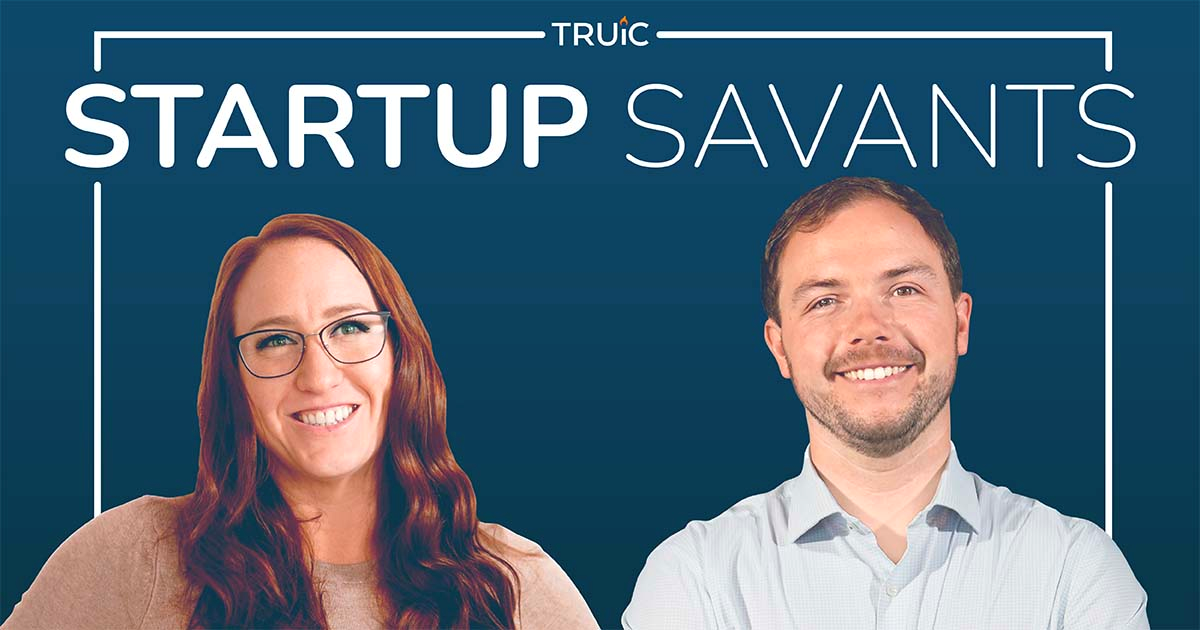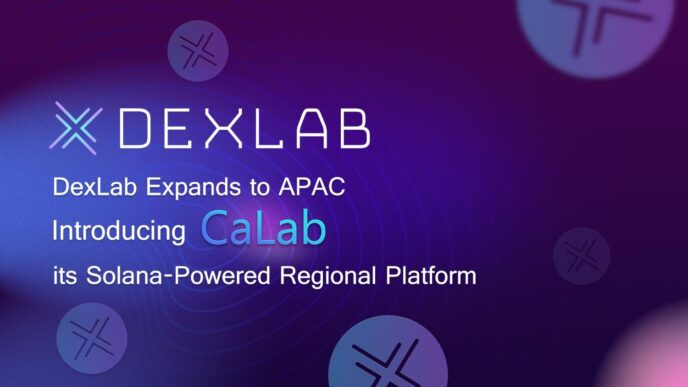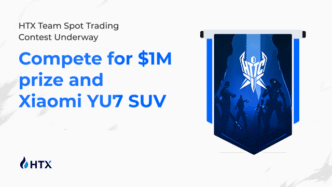The Startup Savants podcast tells the stories behind the startups that are changing current social and business milieus by fireside chats with their founders. On this episode, the guest is Andrew Hoag, founder and CEO of Teampay. Andrew is a serial entrepreneur whose career began at NASA working with supercomputers.
In founding several companies, Andrew has gained unique insights and contacts in the investor community. He has raised over $21 million for his present company, Teampay. Teampay provides a platform that makes analyzing procurement dollars a great deal easier. The company is a trailblazer in the spend management market.
Tell us how you started Teampay, and what is the mission of Teampay?
Yeah, so those are kind of related. Teampay really came about around solving my own problem. And a little of it was pattern recognition where I’d been an operator founder executive before, and I always had teams that needed to buy things, to do their job. And I realized in today’s world, every single employee is part of the procurement team.
You talked about modernizing the finance problem, making accounting and purchasing a little bit easier and more integrated. How exactly does the platform do that?
“What we realized is a lot of companies have a communication problem between the finance team, which has all the numbers, all the information, all the policies and the employees at the edges. And so Teampay is really a software product that sits in the middle and brings those two parties together. So we help employees understand where they should buy something, how they should pay for it and what process they need to go through to get it done. And so, that helps solve the employee side of it, as opposed to reading something on a Wiki when you make a purchase twice a year. That’s really important. And then on the finance side of it, we allow them to set the rules of the road up front, put their policies in place, and then the software acts as the middleman and actually intermediates between the two parties.”
How did you acquire your first hundred customers?
“Yeah. I’m chuckling, because that was a ‘what got you here won’t get you there’ kind of thing. Right? The first probably 10 customers … was … a little bit of our network. I got a lot of negative signals from my immediate network … most of my friends … would get the product and then they would never use it.
I think in some cases probably if I hadn’t had some of the earlier experiences, I would’ve changed the product, but instead I changed the market. And so I went through my investors network and I tried to get to companies that were a little bit larger than my immediate circle of friends and my immediate first degree connections. And we got to second degree connections and then you feel a little bit better about like, ‘Hey, you need to pay me for this.’ Right? Every founder’s embarrassed to charge for their product when they launch it. At least I was, and most are. And just asking someone for money solves a huge problem.
It sets up a bunch of expectations, but it was those second degree connections where we actually started to see engagement with the product because they were bigger than the companies that I immediately had access to and we were charging them. And so, that’s really how we got to the first 10 and then really this journey from 10 to a hundred was me starting to build repetition. We had outbound marketing efforts and emails that we were sending. I was still doing most of the demos in sales. And then probably halfway along that journey, we hired a professional seller. So, I got out of selling pretty quickly.”
How long did it take to get from zero to 100?
“Within a year and a half, probably even a year. Within a year of launching the product I stopped selling. And the benefit of that is that our prices went up because now the seller was getting compensated on the revenue. And so we saw a big increase in prices and that seller was doing their own outreach and we had marketing campaigns and inbound and a bunch of other things running at that point. Yeah. That was the journey from zero to 10 and then from 10 to a hundred.”
What did you say in those early outbound marketing communications?
“Early on people are looking for references and social proof. So that’s where the second and third degree connections were really helpful. One of the things I would always do is if I reached out to someone, if they weren’t the right person, I would ask them for a referral to someone who is the right person. So you never leave without trying to get something out of that conversation. We tested on subject lines, we tested on the copy, we were testing the messaging. And a lot of times it was this incremental process, which I found really useful where you were able to take a call or a demo that you had with one customer, take the quotes and the information from that and use that to introduce to the next customer. So we started using the customer’s language in subsequent emails and refining that, and that was a really helpful part of the process.”
With regard to company culture, what insights did you gain?
“I was out fundraising and meant I spent a lot of time in meetings, a lot of times out of the office and I would come back and I realized that I was an outsider to my team … And it wasn’t bad and fortunately I’d hired great people and we’re still really good friends with everyone. But there was this moment of like, “Oh, if we’re not explicit about the culture, the culture will form itself.”
What are the challenges to creating a healthy company culture?
“I knew that every time you raise money, every time you grow the team, you go through this step function where a bunch of things break and you want to be intentional and explicit. So we have five core values that we posted on our website. We talk about those values, if not every day, at least multiple times a week. And we set those values when we were, I think, four or five people in the room. And the reason we did that was because every person we added was double digit percentage of the culture. And so there was this very explicit conversation I had of like, “Okay, who are the people that we want to work with?” We did this collaboratively, right? It wasn’t just who I want to work with because at this point I don’t even own the culture anymore. So, who are the people that we want to work with that will make it fun to work here?”
What values did your team decide to adopt?
“We’re in the business of taking care of people’s finances. That is not a situation where you want to move fast and break things. You can’t really roll back losing someone’s money. So there’s a certain discipline that we wanted to have, which is ready, aim, fire. And there are plenty of cultures that are ready, fire, aim. And those work as well, those are fine, right? They’re just for different types of businesses. And so we decided really early in our trajectory to be intentional about the type of people that we want to work with, to be explicit about how we interview those people and to support and nurture that as we’ve continued to scale and grow … And so … we have a weekly ritual that we call values heroes, so people that are representing our values, grit, impact, self-discipline … teamwork, and curiosity”
What’s so important about company culture?
“Even as you scale, if you’ve infused everyone who’s there, it actually almost works like an immune system … I’ve been on the other side of that. I’ve been rejected by company’s immune systems, right? I didn’t fit with the culture and they had a different culture than I wanted to work in. And you realize that the organism, which is the organization, actually rejects people that don’t fit. And I think that’s a healthy part of it. So you want to make sure that every cell in that organism is inoculated with your culture.”
How is business effectiveness affected by remote working, as opposed to an in-person model?
“We’re hybrid. So, we have a headquarters in New York. We rotate the functional departments through headquarters about once a quarter. And I think we’re 40%, tri-state area, 60% remote at this point. We were 90% local before the pandemic. And as we’ve hired and scaled, we’ve hired more outside of New York than inside of New York. And I think in-person intense collaboration is important. It’s helpful for relational communication. It’s helpful for creativity, brainstorming other types of exercises. And then all the teams need to put their heads down and do the work. And a lot of us have now adapted to do that in a remote environment. We feel like the best of both worlds is really important, but we do believe in bringing people together on a regular basis in both structured and unstructured ways.”
You mentioned that team members were looking for three things earlier: autonomy, purpose and mastery. Can you tell us more about that?
“Yeah. I’ve heard that so long I forget who actually talked about that, but it’s an old management philosophy, similar to another framing I use is Simon Sinek’s ‘The Power Of Why.’ But I think autonomy is when people want to feel empowered. They want to feel like they’re trusted and they want to feel like they have some agency over their own decisions. Mastery — am I competent? Do I feel like I’m competent? And am I getting feedback that I’m actually being successful and competent in what I’m doing? And purpose, which is the mission. And I think that those three things, when they come together, they’re magical and employees in general, humans in general need those three things to really feel like they’re at the top of their Maslow’s hierarchy for their career. And can I actually be driven by what I’m doing? ”
It’s been said that ‘values are only valuable if they are at least somewhat disagreeable.’ Do you have any thoughts on that?
Yeah. That absolutely goes back to where we talk about values in interviewing, we think about the anti-pattern, right? And so an anti-pattern of someone who’s not curious … It could be a Ph.D., but they went through, and they learned what was in the textbook. And they’re really good at learning what’s in the textbook, right? Obviously, at that level, you’re probably doing some original research to get through it, but education level does not equal curiosity for me. I actually look for hobbies. I look for evidence of what you do outside of work. One of our first developers was at a charter school working in the back office, and he made games, his own games. He made board games in his spare time. That’s an insane amount of curiosity. Right? And so, for all of our values, we have the anti-pattern of those values.”
How do you assess an interviewee for the values you want? Teamwork, for example.
We don’t actually interview for teamwork. We interview for empathy. And we interview for your ability to put yourself in someone else’s shoes because we believe that empathy leads to better teamwork.
Why did you make the decision to fund Teampay with venture specifically instead of using any other options?
“I think part of that really was driven by the size of the opportunity … And really for me, the decision to take venture funding was there’s always a little bit of ego that comes into play, but I think it was more around, I would feel disappointed if I was not able to realize the full vision of this opportunity. So by looking at $28, $29 trillion of money that is spent by businesses in the US where nobody actually controls it, the size of that market, 600,000 companies between 200 to 2000 employees in the US. And penetrating that market at scale creates a massive, massive business and to materialize and to actually harvest that scale venture funding seemed like the best path for us to do that. There was another path which is build something that’s a little smaller, build something that grows a little slower, build something that takes the revenue in and is able to reinvest that in the business. But I felt like the opportunity was so large and obvious that I needed venture funding to do it.”
What’s your number one piece of advice for startup founders who are seeking funding?
Show that you have customers who are paying you for it and you can build a scalable business. There’s a lot of … That’s where I was going, right? I think there’s a lot of requirements to seek funding — not all of what you need to have a successful business. So the subset of requirements to make a successful business is smaller than the subset of requirements you need to get venture funding. And I don’t think people really understand that running a good business is actually a subset of what you need to go get venture dollars.
What values drive UX/UI design at Teampay?
“One of our core company values is empathy, right? And I think empathy leads to really good product decisions as well. As an aside … I was hopping onto a Zoom call, and in the Zoom settings, there is a toggle switch. And the label for the toggle switch is turn off video and then it’s blue or gray. If it’s blue, does that mean the video’s off or is it blue that mean the video’s on, and the off is the gray? It’s confusing … One of the core principles that I really wanted to focus on with Teampay, and I think we’ve done very successfully because it is the thing our employees, users, talk about the most, is I just want to be able to walk up to this thing and know how to use it.”
What are some examples of your UX/UI design?
“We started with the chatbot, and we now have a chatbot live on Microsoft Teams, as well as Slack. We have a mobile app, we have a web interface, we have a couple other projects that we’re working on as well. And our philosophy is to bring the interface out to the user. And let’s face it, part of what we are solving is that in most of these systems, somebody has to go read a Wiki page to figure out how to use it. And we didn’t want that. We want to be able to walk up and know how to use it the same way a two-year-old can pick up an iPad.
And so taking that principle of approachability and empathy for the user out into the interface, making it accessible without training, giving people nudges and guidance is really, really important to me. It’s the affordances. And I studied a lot of product design earlier in my career and bringing all of that to bear and how we think through the product experience for our end customers.”
Have you encountered any roadblocks with adoption of this technology?
I think it’s just general resistance to new things that exists in companies … If you think about deploying a tool like this to a company of 2,000 employees, a lot of our customers are 2,000, 5,000 employees, you have a change management problem … So that’s also why we want to make the interface very frictionless … So it’s like stop doing the thing you’ve been doing for the last five years and do this new thing. And that change management takes effort … And so we’ve seen our customers sometimes make hard cuts, which is ‘you’re no longer going to be able to do that old thing that you’re doing.’
It could be turning off the form. It could be disabling the old system by turning off access … And we’ve seen some customers make more gentler nudges or a little more of a carrot approach of if you want to do this over here, you can get faster approval. And for these types of things, you go into Teampay. And everybody takes their own approach that’s appropriate to their organization. But I think change management is hard and every person selling software needs to deal with a change management issue. And first, for me, that comes through leading with the product and then probably leading with support around the product. Could be training documentation, help nudges, information, all those contextual things.”
How do you develop new features that appeal to customers?
“The feedback loop is pretty easy. Our customers are very vocal. Customers always ask for something that solves their problem … They hired your product to solve their problem. So they’ll tell you what they need. And so we run through a process. My product team uses a methodology called … R-I-C-E, where you look at reach, impact, cost, efficiency … And when you run through that, you can prioritize those incoming features based on what customers ask for. I think what makes products great are the features customers don’t ask for and that’s harder.”
And how do you find stuff that they’re not asking for that will still drive delight?
We now have a chatbot live on Microsoft Teams, as well as Slack … Nobody asks for a chatbot to make a purchase … We weren’t filling a problem that someone had directly. And so it’s that other part that I think is more challenging and that comes into picking up clues, being curious. And then the last piece is really having some hypotheses and running some tests. We think if we do X, we will see a business outcome or a customer outcome of Y and you’ve got to be willing to make those investments that are speculative. So you’re not just a feature factory based on what your customers need, but you’re actually leading the market from the front, not from the back.”
How do you know when to quit your day job and devote your time to your project?
“You can remove a lot of the questions and the risk long before you quit your job. You can talk to customers, you can build prototypes. You don’t need to raise money. That’s not important, but you can validate a lot of the market and product risk. You can find out if people think they would use it, you could understand if it would actually solve their problem.
I think it’s not about ‘what could this be in the future.’ It’s not about ‘how big is the product,’ ‘how big is the market’ necessarily. It’s about, can I get someone in front of me to think they’re going to pay for this or use this? Are they excited about it? And excitement isn’t even always the leading indicator, it’s do you have evidence that you’re actually solving a problem for people, and can you capture money to solve that problem or capture value to solve that problem for people? And you can do a lot of validation and verification of that even while you’re working a day job.”
Listen to more episodes of the Startup Savants podcast on Apple Podcasts, Spotify, or wherever you listen to podcasts for more startup stories, entrepreneur advice, and industry insights.













